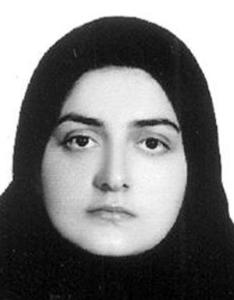Experimental study of creep in self-compacting massive concrete - دانشکده فنی و مهندسی
Experimental study of creep in self-compacting massive concrete

نوع: Type: thesis
مقطع: Segment: masters
عنوان: Title: Experimental study of creep in self-compacting massive concrete
ارائه دهنده: Provider: Bentolhoda Rasoulsharifi
اساتید راهنما: Supervisors: Dr.Mahmoud Nili
اساتید مشاور: Advisory Professors: Dr. Hossein Torabzadeh Khorasani
اساتید ممتحن یا داور: Examining professors or referees:
زمان و تاریخ ارائه: Time and date of presentation: March 9, 2021
مکان ارائه: Place of presentation:
چکیده: Abstract: Today, the technology of building tall structures is expanding in Iran. In this type of structures, due to the large volume of cement used and the large dimensions of the members, significant heat is produced in their bodies at an early age. Although the heat generation pattern of cement hydration is somewhat known, quantitative values of the heat regime, including maximum temperature and time of occurrence, as well as heating and cooling rates, are among the parameters that characterize the properties of concrete in early and long times. On the other hand, shrinkage and creep of concrete are among the volumetric changes of concrete over time that can lead to stresses, cracks, excessive deformation in the structure and ultimately reduce the performance of the structure. Despite the great importance of measuring shrinkage and creep in tall structures due to measurement problems and the need for high accuracy, operators usually abandon the assessment of shrinkage and creep alone used in structures. In this dissertation, by selecting the grade of cement in the range of 450 to 550 kg / m3 and the ratio of water to cement is 0.35, an attempt has been made to evaluate bulk high-density self-compacting concrete in terms of heat, resistance, shrinkage and creep. Slag of 45% by weight of cement in all designs and silica fume of 8% by weight of cement in one of the designs have been used as a cement substitute. The core conditions of the bulk concrete and the surface layer of bulk concrete are simulated through both heat and dry treatments. In heat treatment, concrete specimens are placed in a chamber for 120 hours to which the concrete heat regime is simultaneously measured and applied. Concretes due to shrinkage and creep of concrete were measured using an electric strain gauge and the results were validated using image processing. The results show that regardless of the type of processing, with increasing the cement grade, the maximum hydration temperature, heating and cooling slope, tensile strength and modulus of elasticity of the concrete alone have increased. On the other hand, when the maximum temperature occurs, the growth rate of compressive strength decreases over time. At 550 kg / m3 of cement, the final shrinkage and creep has increased significantly compared to other designs, and despite the high initial compressive strength, its growth rate has decreased over time. Also, the addition of silica fume has caused the properties of concrete to differ more in different processing conditions.The image processing method used in this study confirms the creep strain results obtained from the electrical strain gauge. It seems that the image processing method, as a simple and reliable method, can show the minimum strains that occur during the creep of concrete. Key Words: Self-compacting concrete, Slag, Massive concrete, Creep, Shrinkage, Image Processing
فایل: ّFile: Download فایل
